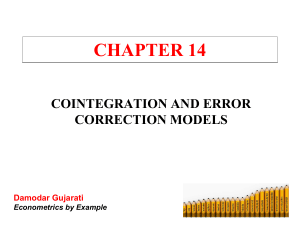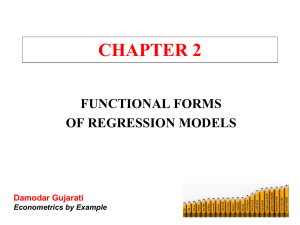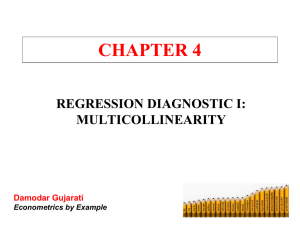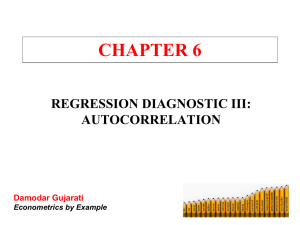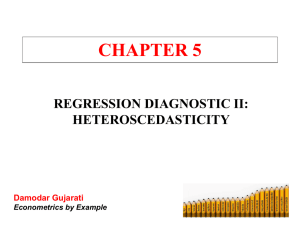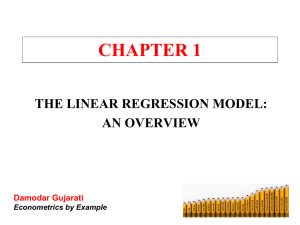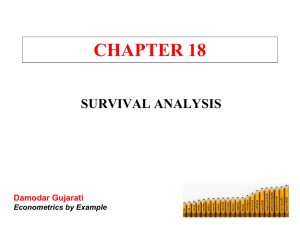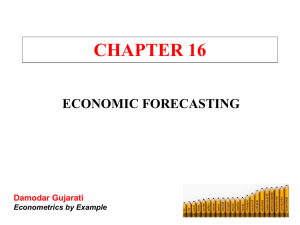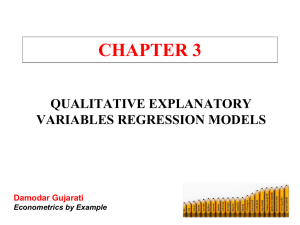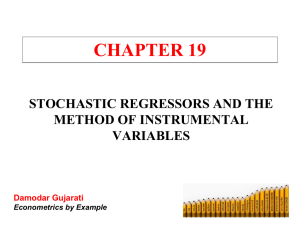Chapter 13 - Facultypages.morris.umn.edu
advertisement
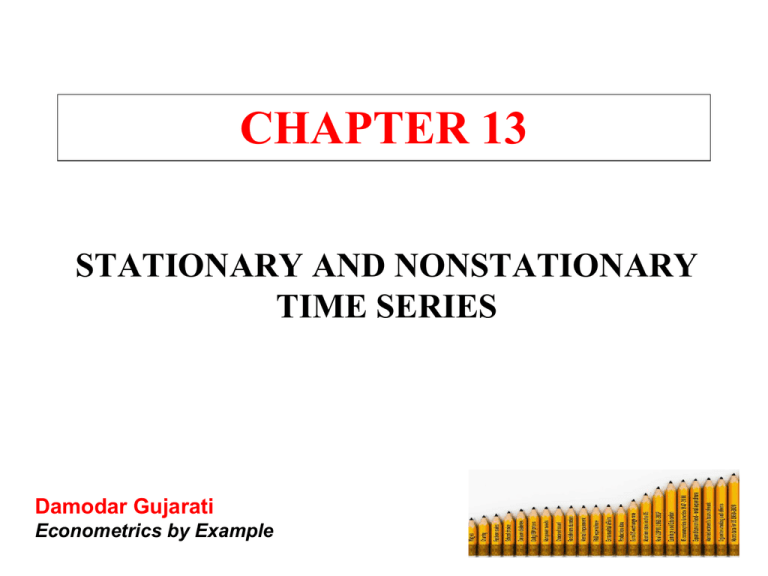
CHAPTER 13 STATIONARY AND NONSTATIONARY TIME SERIES Damodar Gujarati Econometrics by Example TIME SERIES Most economic time series in level form are nonstationary. Such series often exhibit an upward or downward trends over a sustained period of time. But such a trend is often stochastic and not deterministic. Regressing a nonstationary time series on one or more nonstationary time series may often lead to the phenomenon of spurious or meaningless regression. Damodar Gujarati Econometrics by Example DIAGNOSTIC TOOLS Time Series Plot Autocorrelation Function (ACF) and Correlogram The correlogram will suggest if the correlation of the time series over several lags decays quickly or slowly. If it does decay very slowly, perhaps the time series is nonstationary. Unit Root Test If on the basis of the Dickey-Fuller test or the augmented DickeyFuller test, we find one or more unit roots in a time series, it may provide yet further evidence of nonstationarity. If after diagnostic tests, a time series is found to be stationary but trending, we can remove the trend by simply regressing that time series on the time or trend variable. The residuals from this regression will then represent a time series that is trend free. Damodar Gujarati Econometrics by Example AUTOCORRELATION FUNCTION (ACF) AND CORRELOGRAM The ACF at lag k is defined as: k k = covariance at lag k / variance 0 Use the Akaike or Schwarz information criterion to determine the lag length. A rule of thumb is to compute ACF up to one-quarter to one-third the length of the time series. Test the statistical significance of each autocorrelation coefficient in the correlogram by computing its standard error. Alternatively, find out if the sum of autocorrelation coefficients is statistically significant (distributed as chi-square) using the Q statistic, where n is the sample size and m is the number of of lags (=df): k m 2 k k 1 Q n Damodar Gujarati Econometrics by Example UNIT ROOT TEST OF STATIONARITY The unit root test for the exchange rate can be expressed as follows: LEX t B1 B2t B3 LEX t 1 ut We regress the first differences of the log of exchange rate on the trend variable and the one-period lagged value of the exchange rate. The null hypothesis is that B3, the coefficient of LEXt-1, is zero. This is called the unit root hypothesis. The alternative hypothesis is: B3 < 0. A non-rejection of the null hypothesis would suggest that the time series under consideration is nonstationary. We cannot use a t test because the t test is valid only if the underlying time series is stationary. Use the τ (tau) test, also known as the the Dickey-Fuller (DF) test, whose critical values are calculated by simulations and modern statistical packages, such as EVIEWS and STATA. Damodar Gujarati Econometrics by Example DICKEY-FULLER TEST (CONT.) Augmented Dickey-Fuller (ADF) Test If the error term ut is uncorrelated, use the augmented Dickey-Fuller (ADF) test. Add the lagged values of the dependent variable as follows: m LEXt B1 B2t B3 LEXt 1 i LEXt i t i 1 The DF test can be performed in three different forms: Random walk : LEX t B3 LEX t 1 ut Random walk with drift : LEX t B1 B3 LEX t 1 ut Random walk with drift arounda deterministic trend: LEX t B1 B2 t B3 LEX t 1 ut Damodar Gujarati Econometrics by Example
